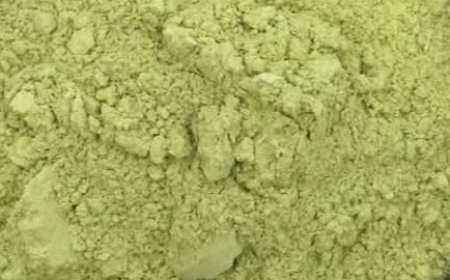Rustic No Knead Rosemary Garlic Bread

There’s nothing quite like the aroma of freshly baked bread, especially when it’s infused with the earthy, fragrant flavors of rosemary and garlic. This rustic no-knead rosemary garlic bread is simple to make, requires minimal effort, and results in a soft, chewy interior with a crisp, golden crust. Best of all, there’s no need for any kneading, making it perfect for beginner bakers or anyone who wants to save time but still enjoy homemade bread.
This recipe takes advantage of a long, slow rise, which is the secret to its flavor and texture. The combination of rosemary and garlic brings a savory, aromatic touch that makes this bread perfect for serving with pasta, soups, or enjoying on its own with a bit of butter.
Recipe Overview:
Dish Name: Rustic No-Knead Rosemary Garlic Bread
Cuisine: Italian-inspired
Preparation Time: 10 minutes (active time)
Resting Time: 12-18 hours (for dough rise)
Cooking Time: 45-50 minutes
Total Time: 12-18 hours (including resting)
Serves: 8 servings
Difficulty Level: Easy (No kneading required)
Ingredients:
For a loaf of this rustic, no-knead rosemary garlic bread, you’ll need the following ingredients:
Dry Ingredients:
3 cups all-purpose flour (plus extra for dusting)
1 1/2 teaspoons salt
1/4 teaspoon active dry yeast (or instant yeast)
1 tablespoon fresh rosemary (finely chopped)
2-3 cloves garlic (minced)
Wet Ingredients:
1 1/2 cups lukewarm water (about 110°F)
1 tablespoon olive oil (plus extra for greasing)
Preparation Time:
Active Preparation: About 10 minutes (mixing and preparing the dough)
Resting Time: 12-18 hours (the dough needs time to rise slowly, so plan for an overnight rise or 12-hour rise)
Baking Time: 45-50 minutes (depending on your oven and the size of your loaf)
Intensity Level:
This bread is easy to make with minimal effort required from you, as there’s no kneading involved. The trickiest part is allowing the dough enough time to rise, so it’s essential to plan ahead. With the slow rise, you’ll end up with bread that has an artisan, rustic texture without all the hard work. It’s perfect for beginners and anyone who enjoys the hands-off approach to bread making.
Instructions:
Step 1: Mix the Dough
Combine the dry ingredients: In a large bowl, mix the flour, salt, yeast, rosemary, and minced garlic. Make sure the ingredients are evenly distributed.
Add water and olive oil: Pour in the lukewarm water and olive oil. Stir with a wooden spoon or spatula until the mixture forms a shaggy, sticky dough. The dough should be moist and slightly tacky to the touch, but not too wet.
Cover and let rise: Cover the bowl with plastic wrap or a clean kitchen towel. Let the dough rise at room temperature for about 12-18 hours (overnight or for a day). The dough should double in size and become bubbly, with air pockets throughout. The longer the dough rests, the more flavorful and airy the bread will be.
Step 2: Shape the Dough
Preheat the oven: When you’re ready to bake the bread, place a Dutch oven or heavy pot with a lid in the oven and preheat it to 450°F (230°C). The pot needs to be hot to create a steamy environment for the bread, which helps form the perfect crust.
Shape the dough: Once the dough has risen, lightly flour a clean surface and gently scrape the dough onto it. Fold the edges of the dough inward a couple of times to form a round shape. You don’t need to knead the dough, just gently shape it into a ball.
Let it rest: Let the dough rest, uncovered, for about 30 minutes while the oven is preheating. This resting time allows the dough to relax and rise a little more, making it easier to transfer to the Dutch oven.
Step 3: Bake the Bread
Transfer to the pot: After the dough has rested, carefully remove the preheated Dutch oven from the oven (using oven mitts). Dust the bottom with a little flour, then carefully transfer your shaped dough into the pot.
Score the top: Using a sharp knife or razor blade, score the top of the dough with a few shallow slashes. This will help the bread expand evenly while baking and create an attractive design on the crust.
Cover and bake: Place the lid on the Dutch oven and return it to the oven. Bake the bread for 30 minutes with the lid on. After 30 minutes, remove the lid and continue baking for another 15-20 minutes, or until the bread is golden brown and has a hollow sound when tapped on the bottom.
Step 4: Cool and Serve
Cool the bread: Once the bread is done, remove it from the Dutch oven and place it on a wire rack to cool completely before slicing. This helps set the structure of the bread and ensures the interior remains soft and airy.
Slice and enjoy: Once the bread has cooled slightly, slice it with a serrated knife. The rosemary and garlic flavors will be aromatic and inviting, making it the perfect accompaniment to soups, salads, or even just a bit of butter.
Nutritional Information (per slice, based on 8 servings):
The nutritional breakdown is approximate and can vary depending on the exact ingredients used.
Calories: 180 kcal
Protein: 5 g
Fat: 5 g
Saturated Fat: 0.5 g
Carbohydrates: 28 g
Fiber: 2 g
Sugars: 0 g
Cholesterol: 0 mg
Sodium: 400 mg
Potassium: 80 mg
Vitamin A: 2%
Vitamin C: 2%
Calcium: 2%
Iron: 8%
Tips for Success:
Use Room Temperature Water: It’s important to use lukewarm water (around 110°F or 43°C) for activating the yeast. Too hot or too cold water can affect the yeast’s activity.
Don’t Skip the Resting Time: The long rise is key to developing flavor and texture in this no-knead bread. Make sure to let the dough rise for the full 12-18 hours to get the best result.
Use a Dutch Oven: A Dutch oven or heavy pot with a lid is essential for this recipe. The pot helps create steam, which results in a beautiful, crusty bread. If you don’t have a Dutch oven, you can use any oven-safe pot with a lid.
Add More Herbs: If you’re a fan of herbaceous bread, feel free to increase the amount of rosemary or even add other herbs like thyme or oregano. You could also experiment with adding cheese, such as grated parmesan, for extra flavor.
Bread Storage: Store leftover bread in a paper bag or loosely wrapped in a clean kitchen towel. Avoid plastic, as it traps moisture and can make the crust soft. The bread will stay fresh for about 2-3 days. To refresh the bread, you can reheat it in the oven for a few minutes to bring back its crusty texture.
Conclusion:
This rustic no-knead rosemary garlic bread is the perfect recipe for anyone who loves fresh, homemade bread but doesn’t want to spend hours kneading and waiting. With minimal effort and a bit of patience, you can enjoy a warm loaf of bread with an irresistible flavor from the garlic and rosemary. The best part is that this recipe is so versatile, you can add extra ingredients or tweak it to suit your tastes.
Whether you’re serving it alongside a hearty soup, making sandwiches, or simply enjoying it with a pat of butter, this bread is sure to become a favorite in your baking repertoire. Enjoy the comforting aroma and the rustic, flavorful bite of your homemade rosemary garlic bread!
What's Your Reaction?





















